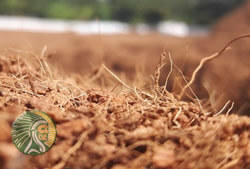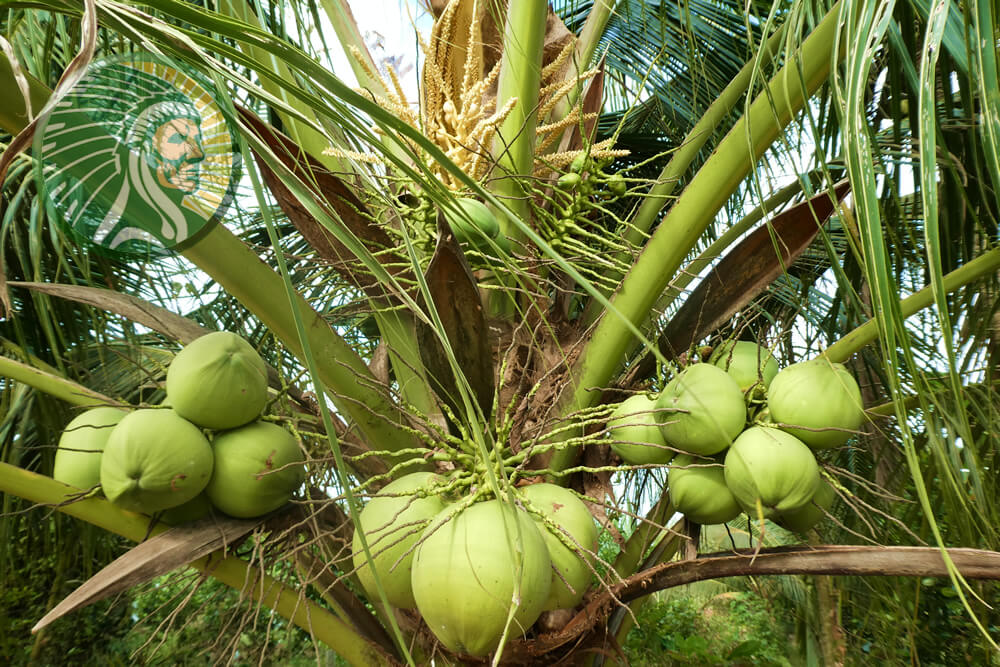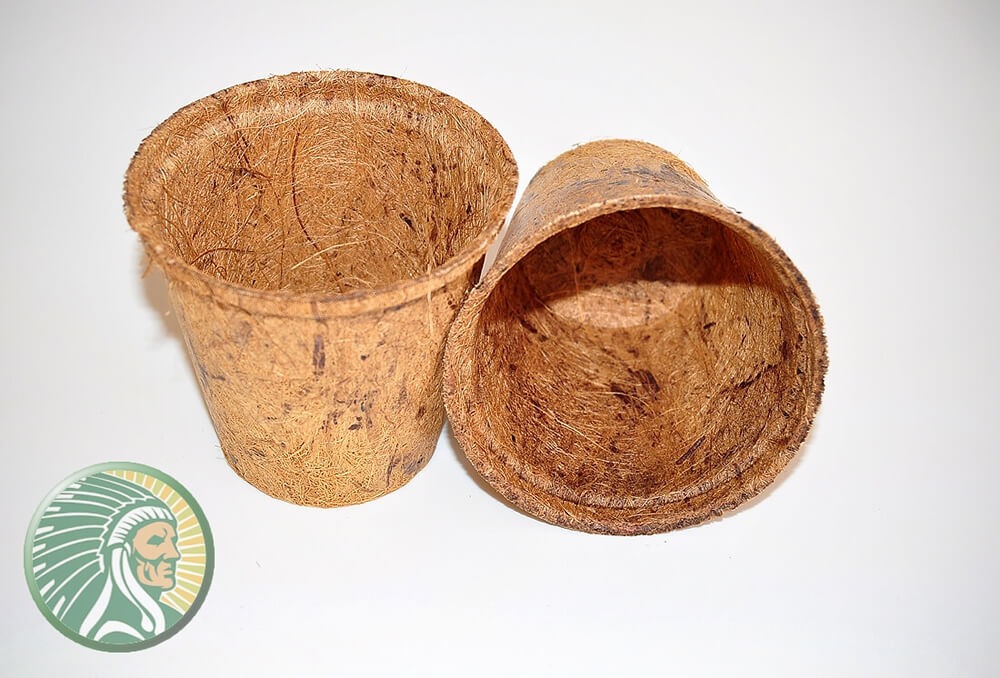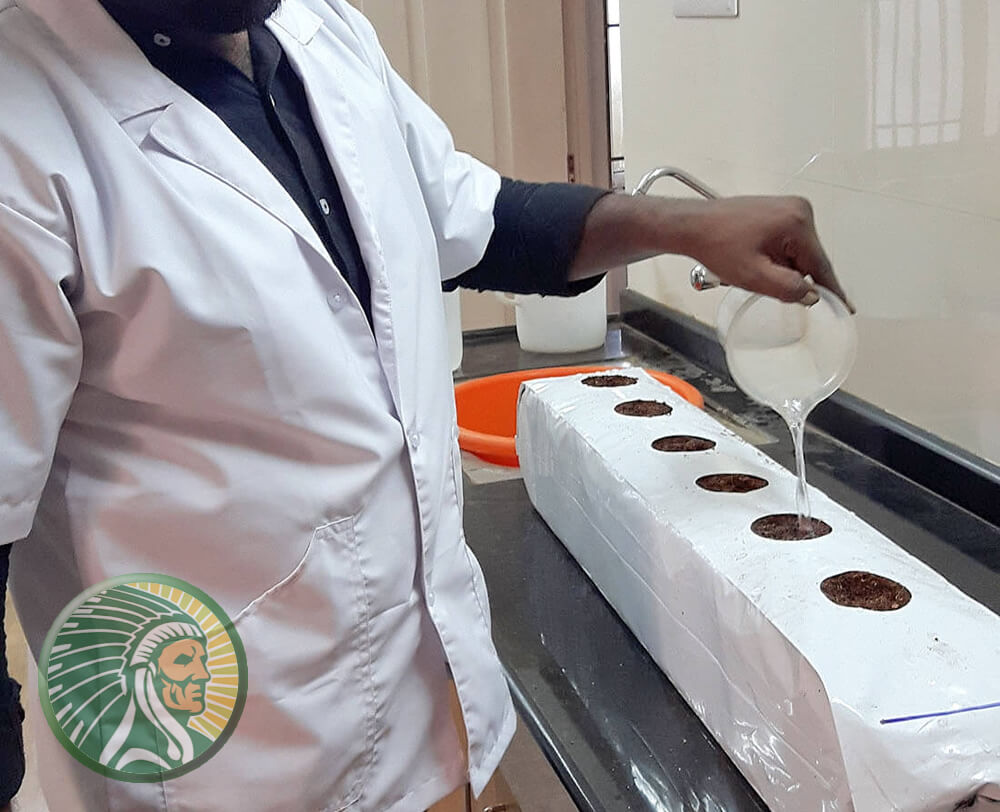- Giuseppe, U.
- News and advice on hydroponics culture indoors and outdoors!
- 74 likes
- 51477 views
- 0 comments

The coconut substrate
It is a 100% vegetable growing substrate, which comes from the coconut shell from which it is obtained once the fruit is removed, which we know as coconut for human consumption and for the manufacture of products such as copra and coconut oil . From coconut, fiber is also obtained for the textile industry (longer fibers) and fiber (shorter than the textile) and lignin particles for the culture media.

In Spain there are not many growers that grow exclusively on 100% coconut substrate , normally these growers mix peat and coconut in different proportions . This is done to improve aeration and the structure of the peat. But the world trend is gradually changing towards semi-hydroponic cultivation with 100% coconut substrate or hydroponic (without soil, only with water).
The difference between a 100% hydroponic recreational cannabis production system and a semi-hydroponic system
Mistakes in 100% hydroponic are very expensive and can be catastrophic for cannabis plants. While in a semi-hydroponic system on a coconut substrate, the possible mistakes made are easily corrected . So experienced growers have realized that coconut is a great alternative to peat and much safer than pure hydroponics for the following reasons:
.
- Alternative more environmentally friendly than mobs: Mobs are generated in the soil, after tens of years of transformation before extraction, so it takes a long time for their regeneration. However, the coconut substrate, as we have mentioned before, is extracted from the coconut shell and is an easily accessible product. Coconut is a 100% renewable source, coconut trees are grown 100% organically, with no fertilizers and no pesticides. The coconut tree cycle in the areas where it occurs is short, 45 days between flowering and harvesting (11 months per year).
- Greater plant development : in pots of the same volume, the pot with coconut substrate will grow larger plants than with peat. This is because the coconut gives the roots greater access to the nutrients and facilitates their development, without any inconvenience, since it allows a correct aeration of the substrate and as a consequence of the roots.
- No damage from excess moisture occurs: the coconut substrate has a maximum water retention, all excess is drained, but this is not the most important thing. The great thing about the coconut substrate is that the humidity stores it inside the particles, so the roots that are in contact with the coconut will never have excess water (if we have a good coconut substrate, it does not work either), but they will always have water and nutrients available as long as the coconut stays moist and we don't let it dry completely.
- Allow us to be wrong: since coconut has no nutrients, we have to supply all the nutritional needs of cannabis plants as fertilizer. If there is any deficiency, it will be seen quickly in the plant, and we can correct it immediately, as the plants will absorb the nutrients quickly and efficiently. Although, on the contrary, we observe that we are having EC (electro conductivities) in the drainage water too high, that is, we are passing feeding the plants, it is solved with washing risks until adjusting the drainage EC to the appropriate values for the variety that we are cultivating and its moment of development.
- Reusable: with a good wash at the end of the crop cycle and preventing it from dehydrating completely, we can continue to use the coconut substrate as it degrades very slowly. And once it has been decided that it will no longer be used for cannabis plants, it can be mixed with garden soil, the coconut will give structure to the soil and improve the production of ornamental plants.
- Easy to transport: the coconut substrate can be found in various formats, but there are some that are made of pressed coconut that are not very large, from which a large volume of ready-to-use substrate is obtained once it is inflated, such as 5Kg, grow bags and grow tables. With 5Kg blocks we can obtain 90L of loose coconut substrate ready to plant. It can also be found in 50-70L bags of coconut already loose.
- Improves yields: the coconut growing system is very close to the hydroponic system, but with considerably more margin of error and much easier to handle. So the final yields are very close to the hydroponic yields that are higher than if we cultivate in peat.
In future Blogs, we will explain what CIC (Cation Exchange Capacity ) is and the advantages of coconut compared to other substrates and hydroponics, since the CIC of coconut is very interesting for regulating the release of cations such as MgO.
All of the trials that the YUKHA team has developed over the past 6 years were conducted solely on potted coconut substrate .
With the coconut substrate everything is an advantage, from YUKHA we encourage you to try this cultivation system without any fear. You will fall in love with growing on a coconut substrate and you cannot go back ...
Giuseppe, U.
![]()
Translated from the original text in Spanish by Yukha






Comments (0)